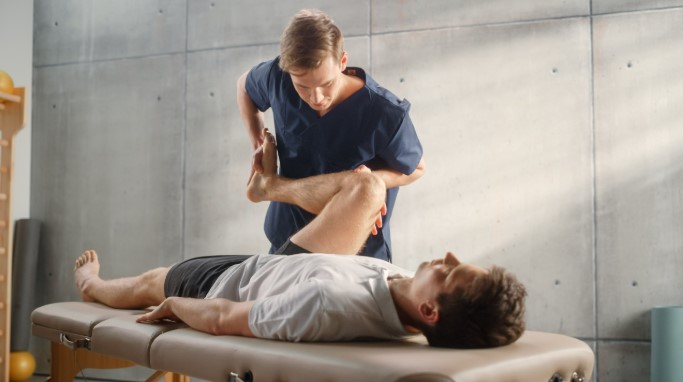
In the relentless, high-octane world of professional football, a player’s greatest asset is their availability. For clubs competing in Portugal’s Primeira Liga, where the stakes are perpetually high and the demands of domestic and European competition are unforgiving, injury management is a core pillar of performance and success. The difference between lifting a trophy and falling short often boils down to which squad keeps its key players fit through the congested fixture list.
Portuguese football clubs have evolved sophisticated, science-driven strategies, combining cutting-edge technology with meticulous player care to maintain peak physical condition and, crucially, to minimise the devastating impact of time-loss injuries. This isn’t just about treatment; it’s about a proactive culture of preservation that addresses everything from acute injuries to chronic injuries that can derail a season.
The multi-disciplinary medical ecosystem
The days of a single club doctor and a general physiotherapist are long gone. At the top Portuguese clubs, injury management is spearheaded by a multi-disciplinary team that functions as an integrated ecosystem.
This unit typically includes sports medicine physicians, physical therapists, sports scientists, nutritionists, and even dedicated psychological support staff. Their collaboration is paramount. When an injury occurs, the club doctor provides a rapid and accurate diagnosis, often utilising advanced imaging to assess the musculoskeletal system. The physiotherapist then designs an individualised rehabilitation protocol, working in lockstep with the sports scientist.
Crucially, this is supported by detailed research. Lower limb injuries, particularly muscle strains in the hamstrings and quadriceps, are the most frequent issues, necessitating highly specialised and targeted rehabilitation. Sprains and strains account for a significant portion of match-day absences, while joint injuries and tendon injuries require particular attention due to their complexity.
This focus on individualised care extends even to specialised equipment. The medical and sports science teams also consult on the design and material science of gear. For instance, they recognise the importance of high-quality goalie jerseys, which ought to incorporate extra padding and robust, yet flexible, materials to withstand high-impact dives and landings. These details are factored into injury prevention strategies for shoulder and hip protection.
The team’s collective goal is to make players more resilient against future injuries. The seamless communication between the medical department and the coaching staff is the final piece of the puzzle, ensuring that rehabilitation milestones align with the team’s tactical schedule.
Technology and data-driven prevention
The shift from reactive treatment to proactive prevention is largely powered by technology. Top-tier Portuguese clubs invest heavily in systems that quantify and monitor every aspect of a player’s physical load.
Wearable GPS devices are standard issue during every training session and match, providing granular data on external load metrics such as total distance covered, high-speed running, accelerations, and decelerations. This external data is combined with internal load monitoring, often through rate of perceived exertion (RPE) scores and heart rate telemetry.
The aggregation of this enormous volume of data allows sports scientists to detect patterns and calculate a player’s acute-to-chronic workload ratio, a key indicator of injury risk. By identifying a sudden, high increase in acute load relative to a player’s habitual training (chronic load), the medical team can flag a player as high-risk and recommend a tailored reduction in their training volume before a muscle injury or an overuse injury scenario manifests.
Advanced diagnostic tools like thermography are also utilised in some clubs to identify areas of inflammation or asymmetric muscle temperature, offering another pre-emptive layer of injury surveillance. This technology can detect early warning signs of stress fractures and compromised blood flow to vulnerable areas, enabling intervention before serious damage occurs.
Return to performance and optimisation

When an injury does happen, the focus of the rehabilitation process is intense and highly individualised.
Portuguese clubs increasingly utilise state-of-the-art facilities that mirror the intensity of the competitive environment through comprehensive sports injury rehabilitation programmes. These include anti-gravity treadmills, specialised strength and conditioning equipment, and comprehensive hydrotherapy pools. The recovery phase often incorporates objective strength testing, such as isokinetic dynamometry, to compare the strength and power of the injured limb against the uninjured one, ensuring a full restoration of function.
The physical therapy protocols are particularly sophisticated when addressing common injuries like an ankle sprain, where proprioceptive training and gradual load progression are essential. Sports rehabilitation specialists employ manual therapy techniques to restore mobility and reduce scar tissue formation, complementing exercise-based interventions.
Beyond injury rehabilitation, clubs are also optimising overall player health for longevity. This holistic approach includes meticulously planned nutrition and hydration strategies, often based on the Portuguese Football Federation’s own consensus guidelines, which emphasise specific carbohydrate and protein intake timing for optimal muscle glycogen replenishment and repair post-match. The use of recovery modalities like ice baths, compression garments, and dedicated sleep monitoring is integrated into the daily routine.
The aim is to accelerate physiological recovery between match days, combating fatigue—a significant injury risk factor—and ensuring the players are not just fit, but genuinely fresh and ready to perform at the elite European level.
Conclusion
The ultimate objective of a top-tier sports injury management programme is to transform player availability into a sustainable competitive advantage. It’s a continuous, day-to-day commitment that recognises human physiology as a dynamic, complex system. It manages the small, daily battles against fatigue and minor strains, ensuring the star players are on the pitch when it truly matters. The meticulous detail, the multi-disciplinary teamwork, and the investment in predictive technology solidify their status in a league where fitness truly equals fortune.

